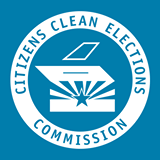 Recently in July 2018 the ASU Morrison Institute for Public Policy issued a report entitled “Arizona’s Voter Crisis”.
Recently in July 2018 the ASU Morrison Institute for Public Policy issued a report entitled “Arizona’s Voter Crisis”.
Here’s the report funded by the Citizens Clean Election Commission (CCEC) and on their website:
https://storageccec.blob.core.usgovcloudapi.net/public/docs/312-Voter-Crisis-Report-FINAL3.pdf
I attended a recent Tucson town hall on October 24 hosted by these 2 entities in which Joseph Garcia of ASU (director of communication & impact/co-author of the report) and Tom Collins E.D. of CCEC reported that 2.1 million or 45% of Arizona’s “potential voters” in 2016 (General) didn’t choose to exercise their fundamental right to vote. They reported on the nationwide trend in erosion of voter participation & on groups which aren’t voting in high numbers: youth, less educated, and Latinos. Moreover, Independents have a lower voter turnout due to not voting in primaries (don’t feel that they belong to either party or don’t know they can vote in the primaries by requesting a party ballot), and also don’t feel part of the electoral process.
In August 2018, the voter turnout statewide (of registered voters) for the Arizona Primary was: 33.26%
In the Arizona Mid-term General Election 2018 the voter turnout statewide was: 64.33%. And higher in Pima County: 70.55%
So the big question in the report was “Why Don’t More People vote?” (see page 15). There are a myriad of answers including “too busy” “out of town”, etc. but a main reason seems to be lack of information on the candidates and voting process. So that means better ways to reach voters needs to occur, along with more information. We here at Blog for Arizona do our best in that regard.
Local reporters after the recent elections were saying that negative campaigning suppresses the vote, or backfires against candidates doing negative campaigning.
Voters have said that they just don’t think their vote will have an impact in the overall races, but also that they choose not to vote. Some of the close races in Pima County and statewide should tell them otherwise. Apparently the race in LD 28 State Senate is still undecided with the vote difference at 347. The race for Pima Community College District 5 Governing Bd. took over a week to resolve due to the closeness of the vote difference, until yesterday when Luis Gonzales (not the incumbent) prevailed by 1997 votes.
So finding ways to create voter engagement is a large factor in turning out the vote. The next town hall on this report will be tomorrow at Phoenix Airport Marriot Hotel (see our Calendar for more info for this State of the State Conference).
Also stay tuned for updates on which groups voted in Arizona in the recent elections. One speculation this time around which we discussed at that recent town hall was that more Latinos might turn out in Arizona due to Latino/Hispanic statewide candidates such as Dr. David Garcia and attorney January Contreras in the races (but both lost their bids for Governor and Attorney General). And turning out the youth vote didn’t seem to occur in the CD 2 Democrat Primary with 30 year old Billy Kovacs coming in 5th of 7 candidates, with 6.6% of the vote.
Is there a voter crisis in Arizona? Loyal readers of Blog for Arizona, what do you think?
Discover more from Blog for Arizona
Subscribe to get the latest posts sent to your email.


LD 28 State Senator Brophy McGee (R) appears to have prevailed over Marsh (D) with only 267 votes. Every vote does matter! Recount in Arizona is only triggered if the difference is less than 50 votes for these legislative offices.
What we found in CD4 is a combination of disengagement among younger, Native and Latinx voters and a more general lack lack of information among voters at large. This last seems to be driven by a feedback system between disengagement (whether due to disempowerment, as among Native and Latinx citizens, or distrust in the system, mainly among youth and independents) and, critically, editorial choices among our locally focused media.
Local papers and radio, with dwindling resources, are frequently not covering candidates or political events, or worse, choosing to cover only those candidates that the editors, producers or publishers approve of. This contributes to the feeling that non-Republicans are few, isolated and powerless out here in rural, encouraging disengagement. As they disengage the media see them as less relevant, and their bias increases to serve their perceived market if not their own political slant.
Communities cannot form or grow without communication, and regular news media are no longer serving that function for progressives or even moderates in most of AZ. We have to look for better ways to reach out to one another and build that community, and do it ourselves.
Thanks Steven. I don’t know much about CD 4 and just checked that Congressman Paul Gosar won re-election by 68.17% over Dem David Brill and a Green candidate. I remember reading that Gosar’s family did not support him, yet he won overwhelmingly. We had good coverage here in CD 2 with Ann Kirkpatrick as the front runner overcoming 6 opponents in the Primary, then Republican CEO Lea Marquez Peterson, who seemed to lose Republican/RNC support along the way. There were many forums for the Primary, but only one debate before the General in CD 2.